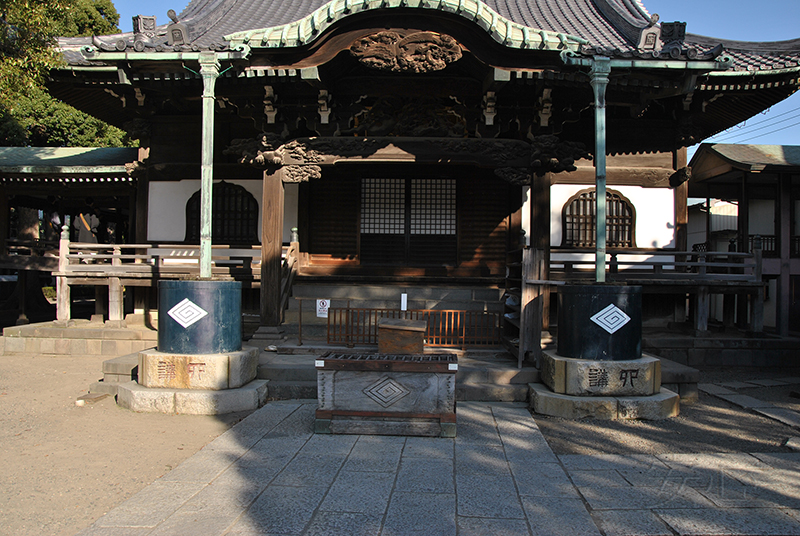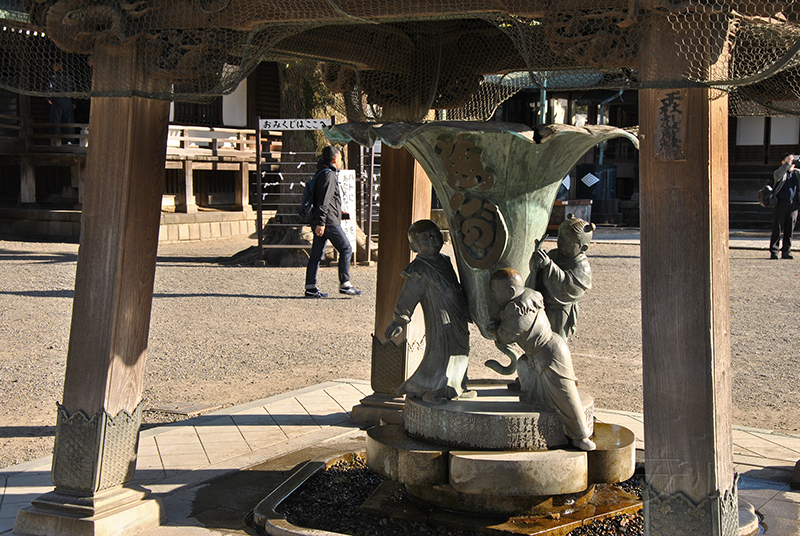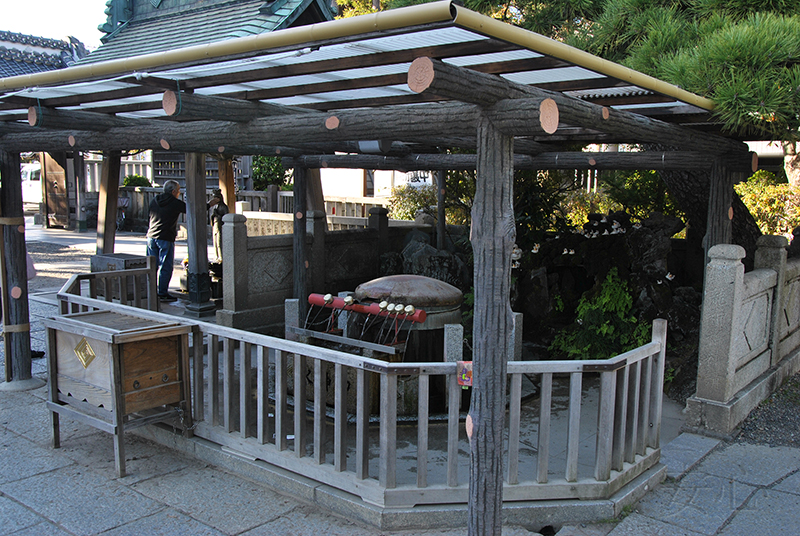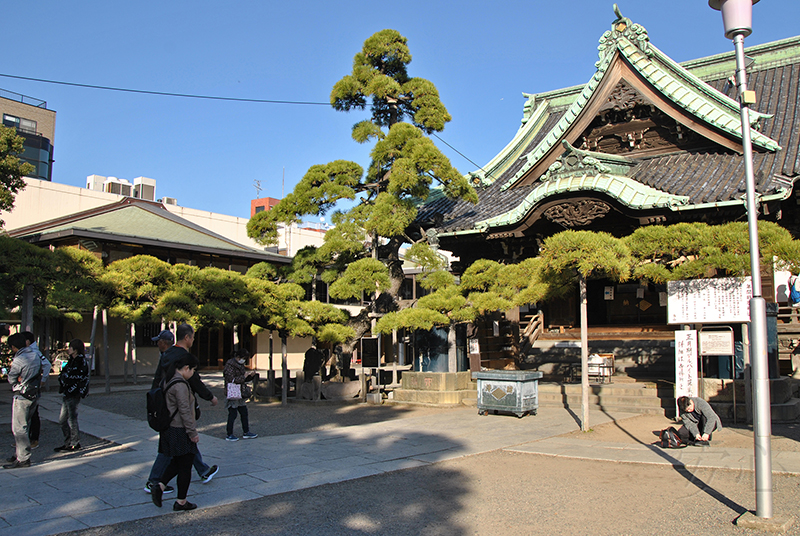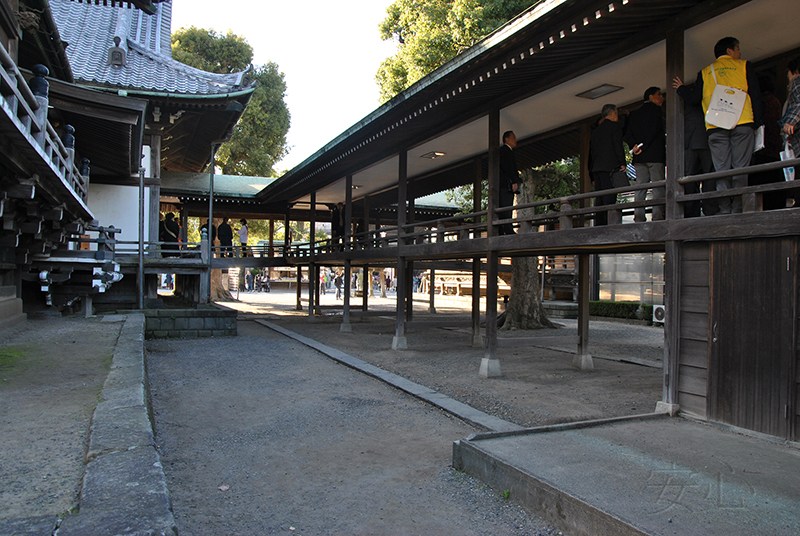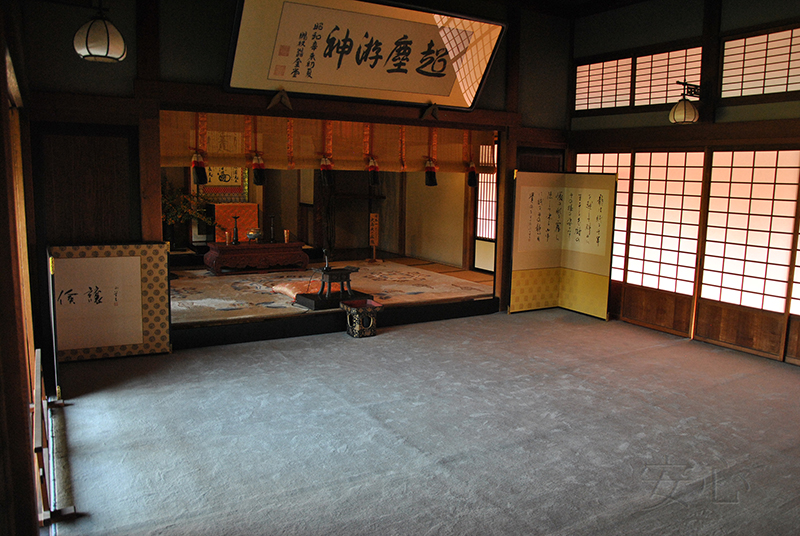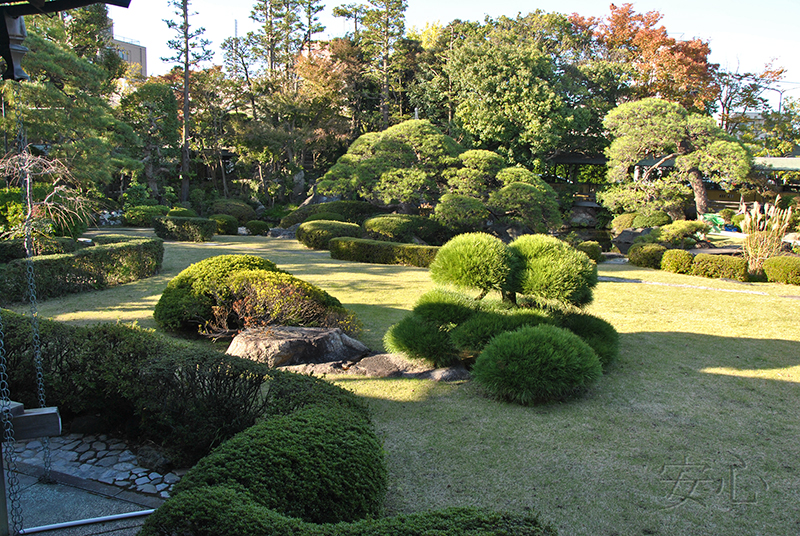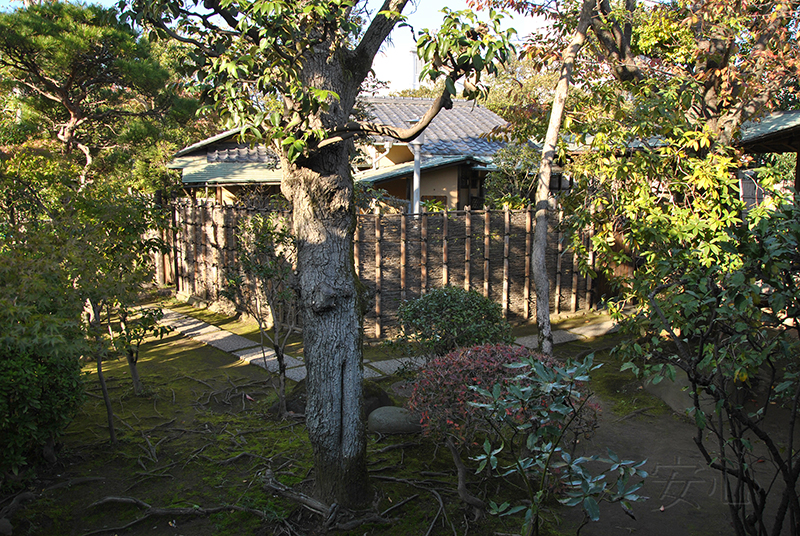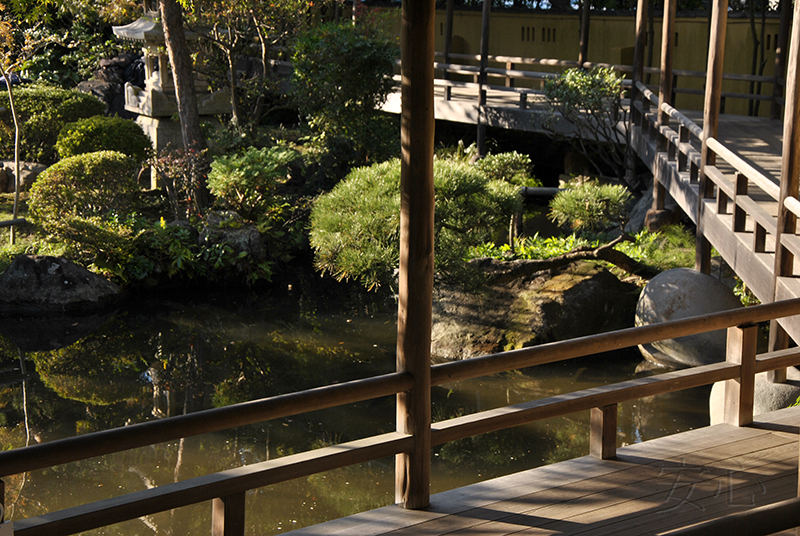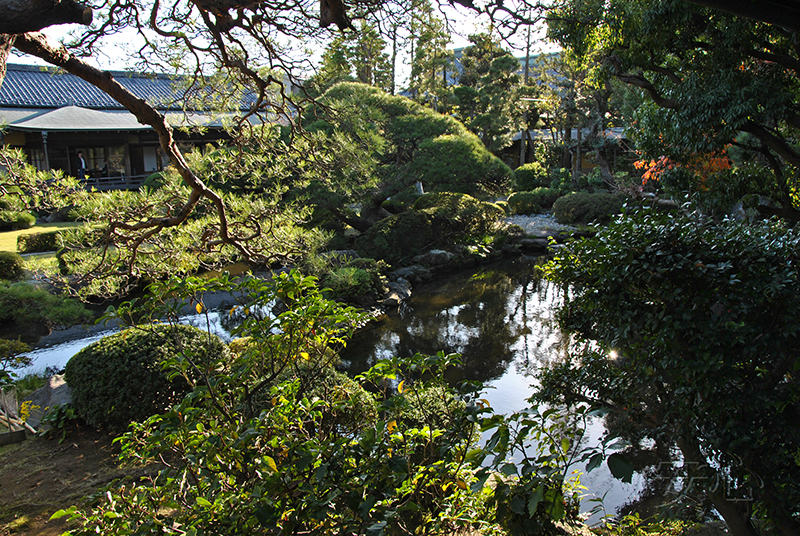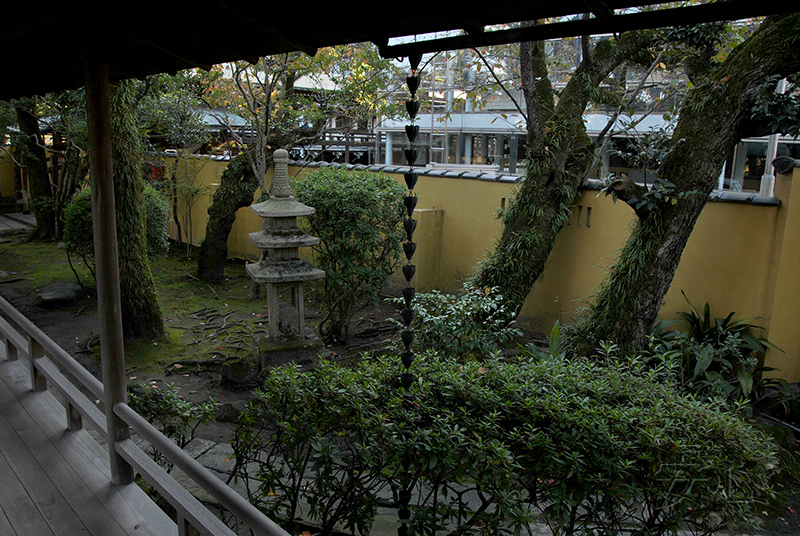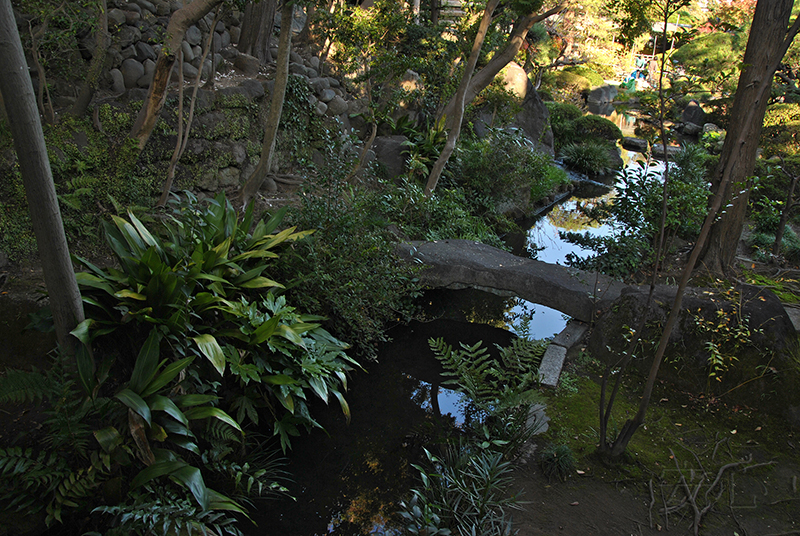
Shibamata Taishakuten garden in Tokyo
The Shibamata Taishakuten Temple, whose real name is Kyoei-zan Daikyoji, was founded in 1629. This is Nichiren Buddhist temple. For many years in this temple was a bronze figure of the Taishyakuten, the Japanese Buddhist version of the Hindu god Indra. Indra is the god of war, storms and rains. Indra is also included in Buddhism, where he and Brahma are the protectors of the Buddha. In Japanese Buddhism, Taishakuten protects against diseases, fires and other disasters. And this statue, created back in the Muromachi era, suddenly it disappeared for Edo period middle stage. Then it was miraculously found when the ninth head priest, Kotei-in Nikkyo, disturbed by the severely dilapidated condition of the main prayer hall, decided to renovate. The statue was covered with a large layer of soot and dust. The priests realized that it was Taishakuten when they cleaned the figure with water. Then they found that one side was a wooden print block of the odaimoku carved by St. Nichiren himself in hopes that it would serve to prevent disease. On the other side is a woodblock print of Taishakuten.
In the third year of the Tenmei Period(1781-1789) there were the spread of epidemics and starvation, and Rev. Nikkyo carried the figure of Taishakuten by himself, visited the victims in various part of Edo and Shimofusa. He passed out ichi-ryu go-fu, in which he staunchly believed, and encouraged the people to pray to the main figure which is said to have brought about many mysterious merits.
The main entrance to the temple is through the central gate of Niten-mon built in 1897.
On the spacious square is the main hall.
Everywhere we saw light rhombuses, probably the symbols of this temple.
There are many different sculptures and one water basin where visitors can wash their hands.
But perhaps the most impressive for us was the Zui-ryu-matsu pine (pine of the Happy Dragon). Its branches, whose length is more than 14 and 12 meters, aided by support beams.
The buildings of the temple are interconnected by galleries where we could see both monks and tourists.
Since we came here mostly because of the garden, at first we were in some confusion, not understanding where it was. And then we found a garden behind a fence. You can get there only through the second floor. We went upstairs and bought tickets. By this tickets you can also visit the building of the main hall Taishyaku-do and admire the walls with stunning wood carvings. Each of the panels is based on the scenes of the Lotus Sutra and tells its own story.
Further we went along the corridor through the building and get to the garden.
In 1965, the seventeenth head priest, Rev. Taigen-in Nichiji, refurbished the garden and named it "Sui-kei-en". Visitors are not allowed to go down to the garden. Walking is permitted only by the gallery surrounding the garden. Moreover, at the beginning you need to take off your shoes and carry it in a bag. This should be taken into account for those who decide to come here in the winter. Even in mid-November, in sunny weather, warm socks did not seem to us superfluous.
First, the gallery goes along the house, and you can even walk around the rooms.
In some places even benches have been set for a more convenient inspection.
At the end of the building, we saw a small but very cute tea garden.
Further, the gallery separated from the house and led us through the garden.
To the right, near the fence, large trees grow, in front of which skillfully formed shrubs hug stones.
The gallery passes over the pond. From here you can admire the pine bent over the water.
At that time gardeners worked in the garden. One of them carefully cleaned the pine on the peninsula.
Another one was busy with aquatic plants.
After another bend, we were opposite the house.
On the other side, behind the fence, temple buildings and glass passages were visible.
Near the gallery, among the stones, stands a tall bowl of water.
This is the most shady place, so during the day all the fish were here.
The road to the exit goes along the stream. There is a stone bridge over it, and stepping stones at the distance. But, unfortunately, it is also impossible to came close.
The garden itself is small, but being in it was very nice. Especially pleasing is the fact that there are almost no people here. Most of them come to see the temple and the wooden carvings. And in the garden, while we were there, we met only one couple sitting on a bench and admiring the pond. But soon they also disappeared, leaving us alone with carps, turtles and hardworking gardeners.
Garden Information:
Address: 7-1-5 Shibamata, Katsushika-ku, Tokyo, JAPAN
Opening hours: from 9 a.m. to 4 p.m.
Closed: December 31 to January 1
anshin©2011All rights reserved. When using the materials of the site, reference is obligatory.
Proposals for co-operation, as well as comments and suggestions on the site please send to the address: anshinsad@gmail.comtel: +7 (965) 121-80-60, 10am-20pm

